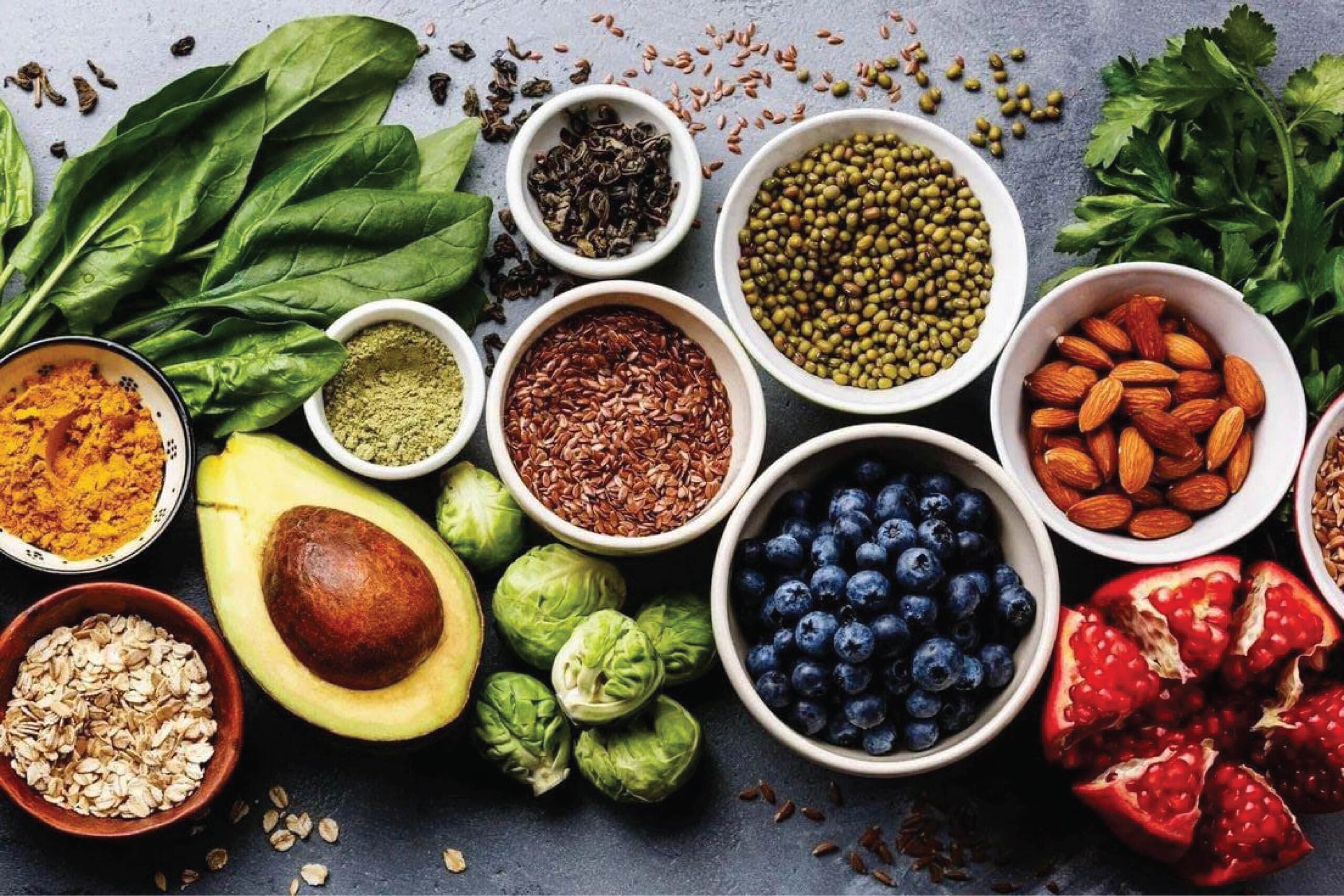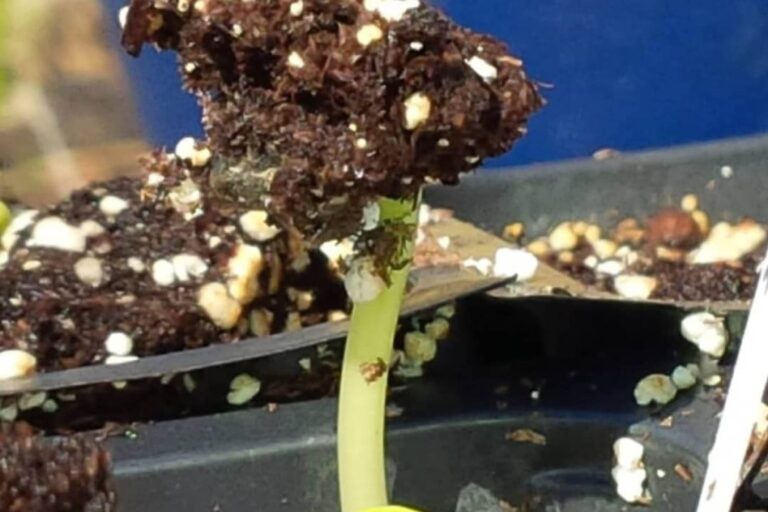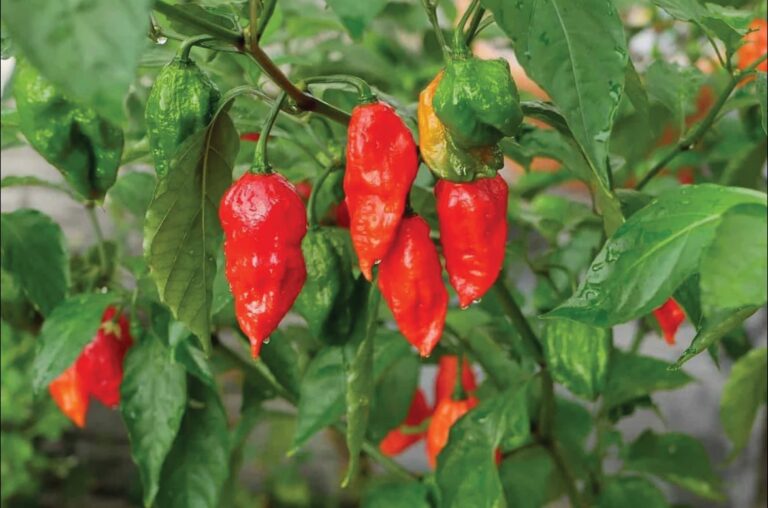Superfoods Gardening: 4 Practical Tips to Cultivate Nutritional Powerhouses at Home
Introduction
In recent years, the term “superfood” has become a buzzword in the nutrition and health communities. Superfoods are nutrient-dense foods said to be particularly helpful to health and well-being. Growing your own superfoods can be a gratifying experience, offering fresh, nutrient-dense produce right at your home. This blog will look at the science underlying superfoods, the benefits of growing them, and practical methods for starting your own superfood garden.
Understanding Superfoods?
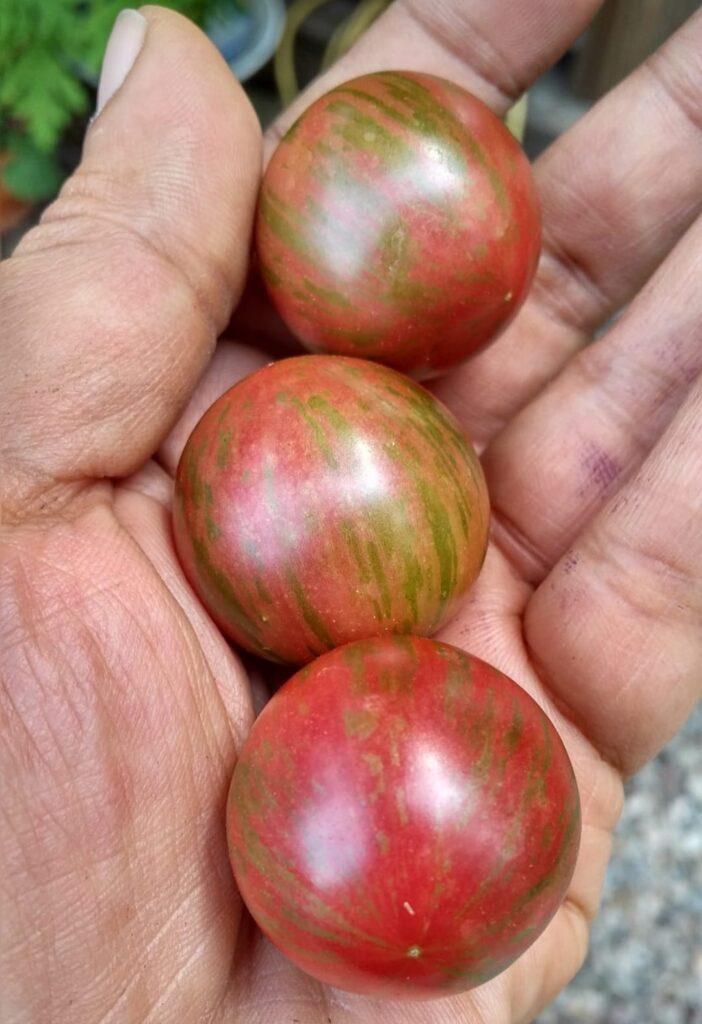
Superfoods are natural foods high in vitamins, minerals, antioxidants, and other vital ingredients. These meals are thought to have several health benefits, including as lowering the risk of chronic diseases, boosting immunological function, and improving general health. Some popular examples include beans, berries, broccoli, brussels sprouts, cauliflower, leafy greens such as spinach, kale, collard greens, Swiss chard, nuts such as hazelnuts, walnuts, almonds, pecans, olives, peas, tomatoes, and many others.
The Science Behind Superfoods
Antioxidants and Phytochemicals
One distinguishing trait of superfoods is their high antioxidant content. Antioxidants are compounds that neutralize free radicals, which are unstable chemicals that can harm cells and contribute to aging and diseases like cancer. Phytochemicals, or naturally occurring substances in plants, also play an important role. Flavonoids in berries, as well as polyphenols in green tea, have been demonstrated to have anti-inflammatory and anti-carcinogenic characteristics.
Nutrient Density
Superfoods are nutrient-dense, which means they have a high concentration of vitamins, minerals, and other beneficial substances for their calorie count. For example, kale is high in vitamins A, C, and K, as well as calcium and iron, making it an excellent source of bone health, immunological support, and general vigor.
Benefits of Growing Your Own Superfoods
Enhanced Nutritional Value
Homegrown superfoods can be more nutritious than store-bought ones. Freshly picked produce contains more vitamins and antioxidants, which degrade over time during transportation and storage.
Environmental Impact

Growing your superfoods lowers your carbon footprint. Commercial agriculture and transportation are substantial contributors to greenhouse gas emissions. Growing your own garden can help to create a more sustainable food chain.
Cost Efficiency
Growing superfoods can be more cost-effective in the long run than purchasing them on a regular basis. An initial investment in seeds, soil, and gardening tools can result in a steady supply of fresh vegetables, saving money over time.
Planning Your Superfood Garden
Choosing the Right Superfoods
- Blueberries: High in antioxidants, particularly anthocyanins, which have been linked to a variety of health advantages, including increased brain function and cardiovascular health.
- Kale: is a resilient plant that thrives in cooler regions and is well-known for its high vitamin content and culinary diversity.
- Quinoa: A complete protein source, quinoa contains important amino acids, fiber, and minerals such as magnesium and iron.
- Turmeric: contains curcumin, a substance with strong anti-inflammatory and antioxidant effects. It needs a warm temperature to thrive.
- Ginger: The presence of gingerols, shogaols, and zingerones in ginger has been found to provide powerful antioxidant properties. These antioxidants have been associated with promoting heart health and could potentially assist in cancer treatment, as suggested by researchers.
- Spinach: a versatile leafy green high in iron, vitamins, and fiber, can be utilized in a variety of cuisines.

When designing your garden, consider including a variety of superfoods that thrive in your climate and soil conditions. Here are a few popular choices:
Preparing the Soil
Healthy soil is the foundation of a successful garden. Conduct a soil test to assess the pH and nutrient content. Most superfoods prefer slightly acidic to neutral soil (pH 6.0–7.0). To improve the structure, fertility, and water-holding capacity of the soil, add organic matter like compost.
Planting and Maintenance
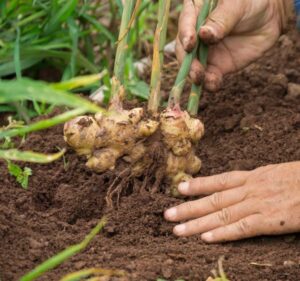
- Planting: Follow the planting instructions for each superfood. Blueberries, for example, demand acidic soil and direct sunlight, whereas kale can withstand partial shade and lower temps.
- Watering: Regular watering is essential, especially during dry seasons. However, avoid overwatering, since it might cause root rot.
- Fertilization: Use organic fertilizers to supply needed nutrients. Compost and well-rotted manure are great options.
- Pest and Disease Management: Use integrated pest management (IPM) tactics. Encourage beneficial insects, use organic insecticides where appropriate, and rotate crops to reduce disease risks.
Harvesting and Storing Superfoods
Harvesting Techniques

- Blueberries: Harvest blueberries when they are completely blue and easily detached. Avoid plucking too early since they will not ripen once harvested.
- Kale and Spinach: Harvest the outer leaves as needed, leaving the center to grow. This strategy, known as “cut and come again,” ensures a continuous supply of greens.
- Quinoa: Harvest quinoa when the seeds are dry and hard. Cut the seed heads and dry them more before threshing.
- Turmeric and Ginger: Harvest the rhizomes 8-10 months after planting. Before storing them, dig them up, wash them, and dry them thoroughly.
Storing Your Harvest
Proper storage is vital for maintaining the nutritious integrity of your superfoods.
- Blueberries: Store in the refrigerator for up to two weeks. For longer storage, freeze them on a baking sheet before transferring them to an airtight container.
- Kale: Store kale and spinach in a plastic bag in the refrigerator. Use within a week for the greatest results.
- Quinoa: Keep the dried seeds in an airtight jar in a cool, dark area. They can last for months.
- Turmeric and Ginger: Keep dried rhizomes in an airtight container away from light and moisture. Ground turmeric can be stored similarly.
Scientific Evidence Supporting the Benefits of Superfoods
Blueberries and Cognitive Health
A study published in the Annals of Neurology discovered that eating more blueberries was connected with slower rates of cognitive deterioration in older persons. Blueberries’ antioxidants, especially anthocyanins, are thought to protect the brain against oxidative stress and inflammation.
Kale and Cardiovascular Health

According to research published in the Journal of the American Heart Association, kale’s high levels of vitamin K and nitrates can help reduce the risk of heart disease by enhancing artery health and lowering blood pressure.
Quinoa and Metabolic Health
A study in the Journal of Medicinal Food showed that quinoa consumption could improve metabolic health by reducing blood sugar levels and improving lipid profiles in overweight and obese individuals. Its high fiber content and low glycemic index make it beneficial for managing diabetes and obesity.
Turmeric, Ginger and Anti-Inflammatory Effects
Curcumin, the main component in both turmeric and ginger, has been widely researched for its anti-inflammatory and antioxidant qualities. Curcumin’s potential for treating inflammatory disorders like arthritis and metabolic syndrome was emphasized in a review published in the Journal of Clinical Immunology.
Spinach and Bone Health
Spinach’s high calcium and vitamin K content promote bone health. A study published in the Journal of Nutrition found that eating spinach on a regular basis can improve bone mineral density and lower the risk of osteoporosis.
Practical Tips for Successful Superfood Gardening
Companion Planting

Companion planting can boost growth, deter pests, and improve soil quality. For example, growing garlic alongside kale might help discourage pests, whilst planting beans with spinach can fix nitrogen in the soil, benefiting both plants. You can observe more tips and tricks on our YouTube channel.
Mulching
Mulch around plants helps to retain soil moisture, regulate temperature, and control weeds. Organic mulches like straw, grass clippings, and wood chips gradually decay and contribute nutrients to the soil.
Crop Rotation
Rotating crops each season prevents soil depletion and reduces the risk of pests and diseases. For instance, follow a planting of heavy feeders like quinoa with legumes that enrich the soil with nitrogen.
Organic Practices
Avoid synthetic pesticides and fertilizers. To maintain a healthy garden ecology, utilize organic methods like composting, natural insect repellents (such as neem oil), and biological management (such as ladybugs for aphid control).
Conclusion
Growing your own superfoods is a satisfying way to supplement your diet with fresh, nutrient-dense produce while also contributing to environmental sustainability. You may cultivate a variety of superfoods at home by studying the science behind them, properly designing your garden, and following optimal gardening methods. Whether you’re a seasoned gardener or a novice, cultivating a superfood garden is a step toward greater health and a more sustainable lifestyle.
By combining practical gardening expertise with scientific evidence supporting the health benefits of superfoods, this site seeks to inspire and guide you in developing a thriving superfood garden that benefits both your health and the environment.
References
- Giovannucci, E. (1999). Tomatoes, tomato-based products, lycopene, and cancer: review of the epidemiologic literature. Journal of the National Cancer Institute, 91(4), 317-331.
- Hollman, P. C., & Katan, M. B. (1999). Dietary flavonoids: intake, health effects and bioavailability. Food and Chemical Toxicology, 37(9-10), 937-942.
- Harnly, J. M., et al. (2006). Flavonoid content of US fruits, vegetables, and nuts. Journal of Food Composition and Analysis, 19(1), 58-69.
- Rickman, J. C., Barrett, D. M., & Bruhn, C. M. (2007). Nutritional comparison of fresh, frozen and canned fruits and vegetables. Journal of the Science of Food and Agriculture, 87(6), 930-944.
- Devore, E. E., Kang, J. H., Breteler, M. M., & Grodstein, F. (2012). Dietary intakes of berries and flavonoids in relation to cognitive decline. Annals of Neurology, 72(1), 135-143.
- Blekkenhorst, L. C., Bondonno, C. P., Lewis, J. R., Devine, A., Woodman, R. J., Croft, K. D., … & Hodgson, J. M. (2018). Association of dietary nitrate with atherosclerotic vascular disease mortality: a prospective cohort study of older adult women. Journal of the American Heart Association, 7(11), e008185.
- Satija, A., Bhupathiraju, S. N., Spiegelman, D., Chiuve, S. E., Manson, J. E., Willett, W., … & Hu, F. B. (2017). Healthful and unhealthful plant-based diets and the risk of coronary heart disease in US adults. Journal of the American College of Cardiology, 70(4), 411-422.
- Chao, S., Anders, M., Turcotte, M., & Pearson, M. (2014). Anti-inflammatory activity of curcuminoids and boswellic acid in patients with osteoarthritis. Journal of Clinical Immunology, 34(4), 540-548.
- Ha, A. W., & Kim, W. K. (2013). The effect of spinach supplementation on bone health. Journal of Nutrition and Health, 46(1), 52-56.

